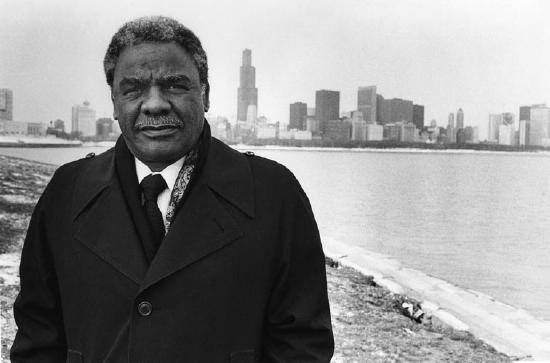It’s a story you’ve heard before: a charismatic black congressman comes onto the election scene, displacing the Democratic frontrunners, winning the primaries, and carrying the general election with the support of young and minority voters in a contest fraught with racial tensions. While the similarities to President Obama may be striking, this is the story of Harold Washington, the first black mayor of Chicago. In 1983 Washington campaigned in response to mayor Jane Byrne and challenger Richard Daley, using grassroots support and mobilization of unregistered voters to achieve victory. In keeping with this grassroots tradition, as well as its mission to show films from the black community to the black community, the Black Cinema House showed three documentaries about Harold Washington made on the South Side in an event titled “When Harold Washington Beat the Machine.”
The three films present a somewhat unified front; in each, minority populations band together in support of Harold Washington. The first twelve-minute film, entitled “Running With the Mayor” (1984), was made by Hispanic students from the Community TV network. It focuses heavily on the campaign to get out the vote, and expresses hope that Harold Washington’s victory will prove a turning point for “the ones who had been neglected by the old machine.” The second documentary is glitzier—set at Harold Washington’s 1983 victory party, it features interviews with Bill Cosby and Jesse Jackson, among others. Titled “Why Get Involved?”, the documentary provides the answer, “to guide the direction of change.” The film closes with Harold Washington being sworn in. The final documentary is a selection of scenes about Harold Washington from a longer documentary, “Chicago Politics: A Theatre of Power” (1987). It covers Harold Washington’s death shortly after his reelection in 1987.
A discussion took place after the screening, in which community members and people involved in the making of these films shared their experiences. The event aimed to answer the question, “what was the legacy of Harold Washington?” but the conversation regularly circled back to regret. “Just as he was getting started, he passed away,” was the verdict of Javier Vargas, one of the makers of the first documentary, and other community members echoed the sentiment. One man remembered Harold Washington delivering on his promise to end patronage jobs and increase job opportunities for minorities, but expressed his belief that he could have done more given the chance.
If there was one thing universally acknowledged at this event, it was that Harold Washington was a man of the people. Perhaps most telling was the emotional undertone of the political dialogue; one viewer offered, “I really miss him.” Current community members, thinking back to Washington’s time in office, regularly referred to him as “Harold” and recounted his small, kind gestures. In a speech from the third documentary, Harold Washington declared, “redemption is not going to come out of hatred, it is going to come out of positive thinking,” as audience members shouted support. When Edward Vrdolyak, the leader of the opposition during Harold Washington’s first term, came on screen, the audience hissed and booed his every word.
No matter what impact he had on the city, Harold Washington still enjoys remarkable loyalty from those whose lives he touched. For all his similarities to Obama, the end of Harold Washington’s time as mayor calls to mind the so-called Kennedy effect—a constant speculation as to what he could have accomplished if he hadn’t died. As one man in the audience put it, “the thing I’m most upset with Harold about is that he died. That was the end of progressive politics in Chicago.”


Thank you